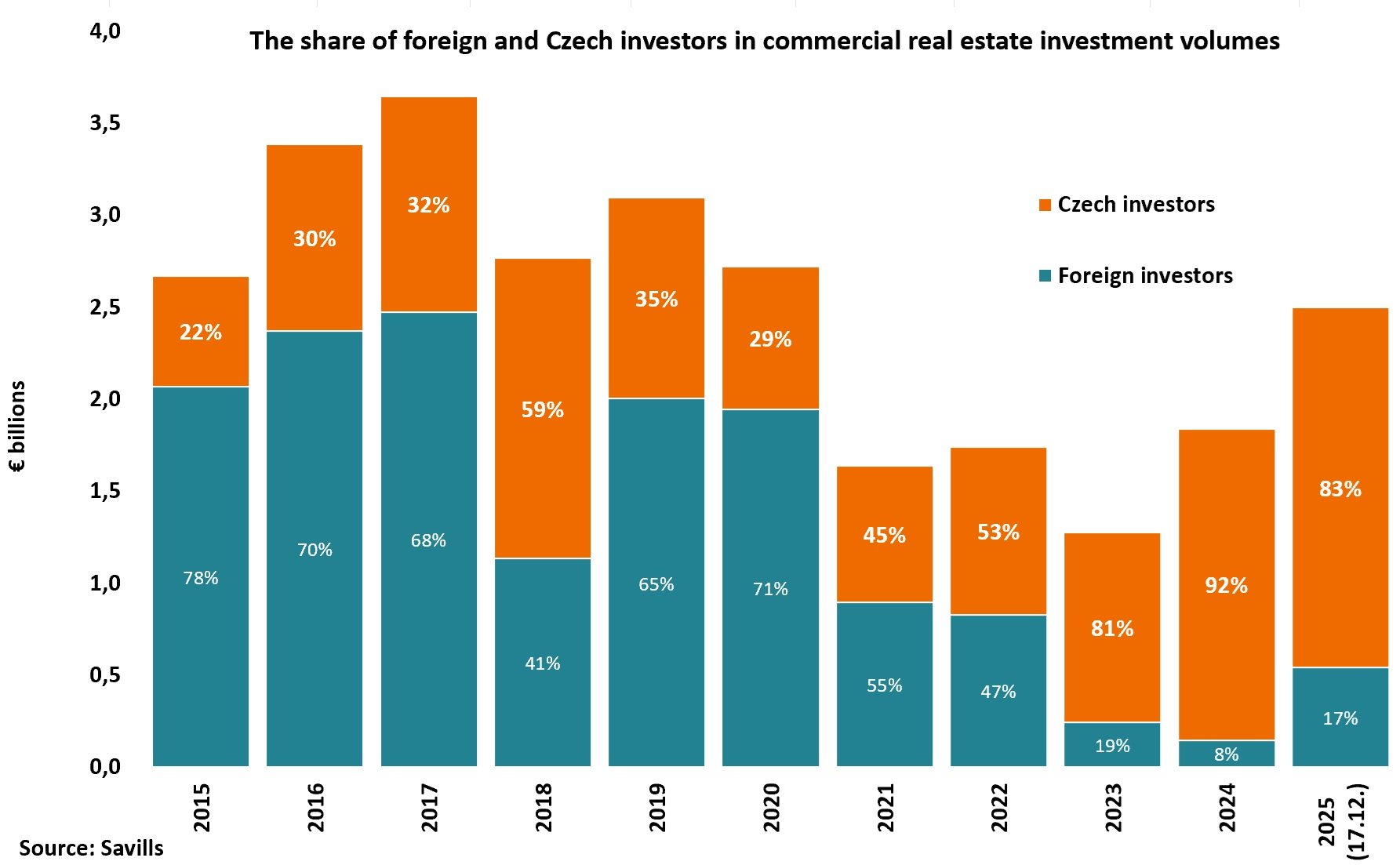Prosperity on the real estate investment market in Poland is still apparent. The good economic situation and attractive yields in comparison to the Western Europe has attracted foreign investors from distant countries and continents. Will the momentum keep going? What are the forecasts for the end of 2019?
Total investment volume in the commercial real estate market is forecasted at the level of EUR 6.9 billion at the end of the year, which would be slightly less than a year before (EUR 7.1 billion). Such amount still outperforms volumes from the previous years (the closest result of EUR 4.9 billion achieved in 2017).
The biggest share in the office investment market still belongs to Warsaw, where transactions with the total amount of EUR 1.7 billion were closed by the end of September 2019. It is expected that additional EUR 0.6 billion would be spent till the end of the year. Among the biggest transactions in Warsaw there were purchase of Warsaw Spire by Immofinanz for EUR 386 million, acquisition of the West Station by Singaporean fund Mapletree for EUR 190 million and the disposal of Ethos by Kulczyk Silverstein Properties for the value above EUR 100 million with Avison Young advising on the sell-side.
Most investors have still been focused on the Central Business District and the City Centre Fringe (eg. Rondo Daszyńskiego area). But the current year proves that also the other districts attracted their interest. Such locations as Mokotów Business District or Jerozolimskie Avenue corridor have gained popularity as the cheaper alternatives to more and more expensive city centre.
Kraków is the second biggest office investment market, with stable yearly volume at the level of EUR 0.5 billion. Apart from the typical regional cities such as Kraków, Wrocław, Poznań, Łódź or Tricity, other and not that obvious destinations emerged, e.g. Szczecin. New locations are being explored by the investors in the pursuit of attractive yields.
The investment market has become more liquid due to yearly increase of number of transactions. 108 transactions in total are forecasted to be closed till the end of 2019. In comparison, there were 96 transactions closed in 2018 and 79 in 2017. “The more liquid the market is, the more investment comfort is ensured,” comments Michal Cwiklinski, Principal, Managing Director Avison Young in Poland. “It also transfers into increased market accountability which helps to attract foreign investors from various countries and continents.”
The demand for office properties has been rising still; total amount of transactions in the office market is expected to increase from 39 in 2018 to 62 forecasted in 2019. Thus, the office market share in total investment volume would increase up to 55 percent. However, not every sector attracts investors at such a scale. The interest in retail properties has decreased, mainly due to the sceptic attitude towards traditional shopping centres, caused by the transformation of shopping habits. 28 transactions in the retail market were concluded in 2018, whereas only 19 transactions in total are forecasted in 2019 which would constitute 44 percent decline in the volume. Slight decrease is noted in the industrial sector. However, this situation is caused by limited supply.
Over the last five years strong capital inflow from the Eastern Asia was remarked. In 2015 investors from the Far East purchased properties totalling EUR 35 million, whereas by the end of 2019 this volume is expected at the level EUR 1.9 billion. It equals the impressive share of 28 percent in the forecasted total investment volume in 2019. It is worth mentioning that capital stream from UK and RSA has slowed down and investors’ origins have been diversified. Apart from typical origins, such as US or Germany, more and more properties have been acquired by the investors deriving from France, Italy, Austria or Israel. “While investment market breaks another record, the share of domestic capital is marginal,” points out Michal Cwiklinski. “In the current year the share of the Polish capital is expected to amount to 1 percent only. This result is worse than in the previous five years, where the share has been fluctuating from 3 percent to 5 percent. Such situation is caused probably by the lack of effective instruments easing investment process for both individual as well as institutional investors.”







